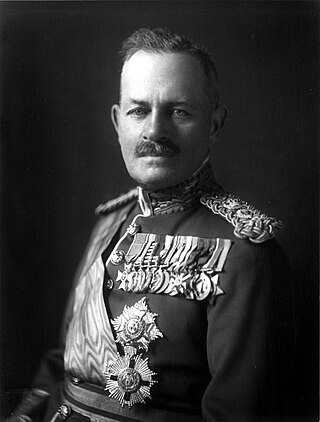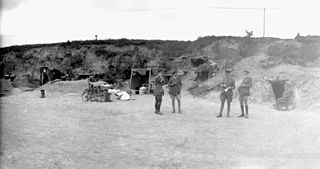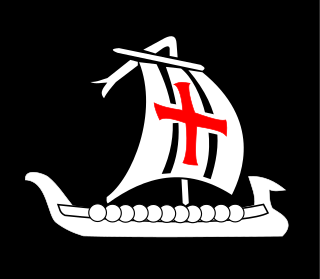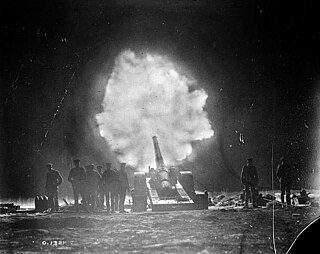| XVII Corps | |
|---|---|
 XVII Corps formation badge. | |
| Active | First World War |
| Country | |
| Branch | |
| Type | Field corps |
| Part of | Third Army |
| Engagements | First World War [1] |
The British XVII Corps was a British infantry corps during the First World War.
| XVII Corps | |
|---|---|
 XVII Corps formation badge. | |
| Active | First World War |
| Country | |
| Branch | |
| Type | Field corps |
| Part of | Third Army |
| Engagements | First World War [1] |
The British XVII Corps was a British infantry corps during the First World War.
British XVII Corps was formed in France in January 1916 under Lieutenant General Julian Byng. [1] In April 1917 the Corps attacked to the east of Arras near the River Scarpe but became bogged down in rain and snow. [2] However, the Corps held the line at Arras, continued to hold it through into 1918 and then broke the main Hindenburg Line at its strongest point in September 1918. [3]
Commanders included:

The Battle of Vimy Ridge was part of the Battle of Arras, in the Pas-de-Calais department of France, during the First World War. The main combatants were the four divisions of the Canadian Corps in the First Army, against three divisions of the German 6th Army. The battle occurred from 9 to 12 April 1917, marking the commencement of the Battle of Arras and serving as the inaugural assault of the Nivelle Offensive. The objective was to draw German reserves away from the French forces, preparing for a crucial offensive along the Aisne and the Chemin des Dames ridge several days later.
The British Expeditionary Force (BEF) was the six divisions the British Army sent to the Western Front during the First World War. Planning for a British Expeditionary Force began with the 1906–1912 Haldane Reforms of the British Army carried out by the Secretary of State for War Richard Haldane following the Second Boer War (1899–1902).

Field Marshal Julian Hedworth George Byng, 1st Viscount Byng of Vimy,, was a British Army officer who served as Governor General of Canada, the 12th since the Canadian Confederation.

The 11th (Northern) Division, was an infantry division of the British Army during the First World War, raised from men who had volunteered for Lord Kitchener's New Armies. The division fought in the Gallipoli Campaign and on the Western Front. The division's insignia was an ankh or ankhus.

The Canadian Corps was a World War I corps formed from the Canadian Expeditionary Force in September 1915 after the arrival of the 2nd Canadian Division in France. The corps was expanded by the addition of the 3rd Canadian Division in December 1915 and the 4th Canadian Division in August 1916. The organization of a 5th Canadian Division began in February 1917 but it was still not fully formed when it was broken up in February 1918 and its men used to reinforce the other four divisions.

IX Corps was a corps-sized formation of the British Army that existed during the First and the Second World Wars.

The Third Army was a field army of the British Army during World War I that saw active service on the Western Front throughout the war.

The VII Corps was an army corps of the British Army active in the First and Second World Wars. In the early part of the Second World War, it was part of the defence forces of the United Kingdom, and later acted as a shadow formation for deception purposes.

General Sir Charles Fergusson, 7th Baronet, was a British Army officer and the third Governor-General of New Zealand, in office from 1924 to 1930.

Lieutenant-General Sir George Montague Harper,, was a senior officer of the British Army during the First World War.
The 10th Infantry Brigade was a Regular Army infantry brigade of the British Army formed during the Second Boer War in 5th Division, and during both World Wars the brigade was part of the 4th Infantry Division.

Lieutenant-General Sir Thomas D’Oyly Snow, was a British Army officer who fought on the Western Front during the First World War. He played an important role in the war, leading the 4th Division in the retreat of August 1914, and commanding VII Corps at the unsuccessful diversion of the Attack on the Gommecourt Salient on the first day on the Somme and at the Battle of Cambrai in November 1917.

The Battle of Mont Sorrel was a local operation in World War I by three divisions of the German 4th Army and three divisions of the British Second Army in the Ypres Salient, near Ypres in Belgium, from 2 to 13 June 1916.

V Corps was an army corps of the British Army that saw service in both the First and the Second World Wars. It was first organised in February 1915 and fought through the First World War on the Western front. It was recreated in June 1940, during the Second World War and was substantially reorganised in 1942 for participation in Operation Torch. It fought through the Tunisia Campaign and later the Italian Campaign.

The Battle of Vimy Ridge was a military engagement fought as part of the Battle of Arras, in the Nord-Pas-de-Calais region of France, during the First World War. The main combatants were the Canadian Corps against three divisions of the German Sixth Army. The battle was part of the opening phase of the Battle of Arras, part Nivelle Offensive and took place from 9–12 April 1917. The objective of the Canadian Corps was to take control of the German-held high ground, along an escarpment at the northernmost end of the Arras Offensive. This would ensure that the southern flank could advance without suffering German enfilade fire.

VI Corps was an army corps of the British Army in the First World War. It was first organised in June 1915 and fought throughout on the Western Front. It was briefly reformed during the Second World War to command forces based in Northern Ireland, but was reorganized as British Forces in Ireland one month later.
General Sir Reginald Byng Stephens, was a British Army general of the First World War and later Commandant of the Royal Military College, Sandhurst, from 1919 to 1923, Major-General commanding the 4th Division, 1923 to 1926, and Director-General of the Territorial Army, 1927 to 1931.

This is the order of battle for Operation Michael, part of the German Spring Offensive fought from 21 March to 5 April 1918 as one of the main engagements of the First World War. It was fought between mixed French, British and Dominion forces and the German Empire in the Somme region in northern France.

General Officers of World War I is an oil painting by John Singer Sargent, completed in 1922. It was commissioned by South African financier Sir Abraham Bailey, 1st Baronet to commemorate the generals who commanded British and British Empire armies in the First World War.

The German attack on Vimy Ridge was a local German attack on Vimy Ridge. The attack took place on 21 May 1916 on the Western Front during the First World War. At the Third Battle of Artois the French Tenth Army captured positions on the western slope of Vimy Ridge and the German 6th Army was forced back to positions on the steeper eastern slope. Both sides resorted to a continuous underground offensive. The Tenth Army was transferred south in March 1916, during the Battle of Verdun and the British First Army and Third Army on either flank extended their lines to take over Vimy Ridge.